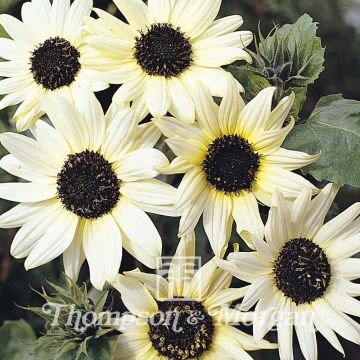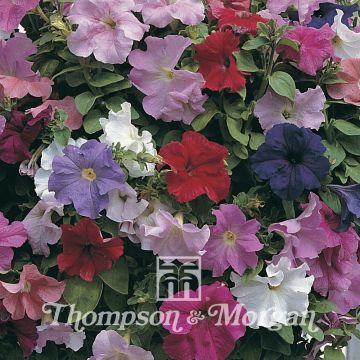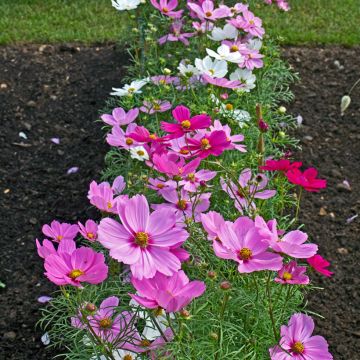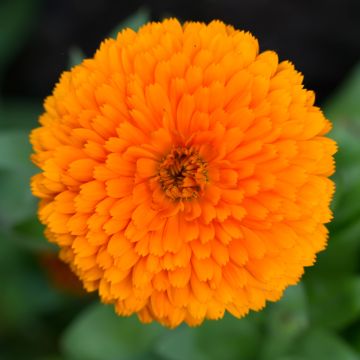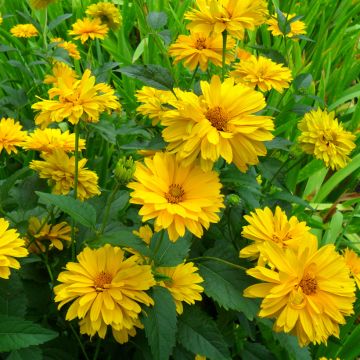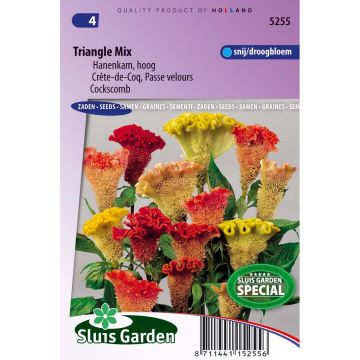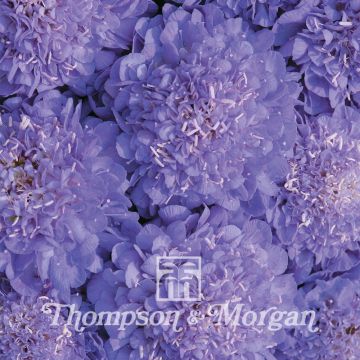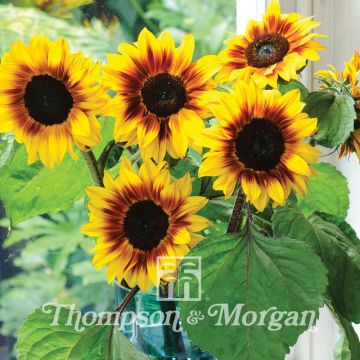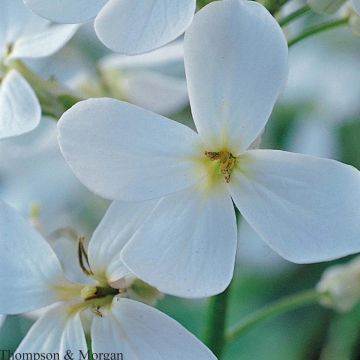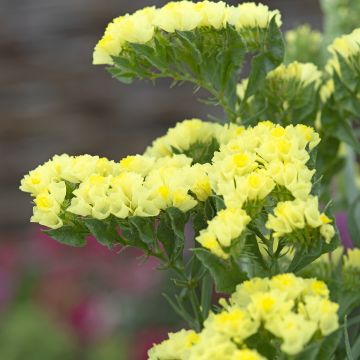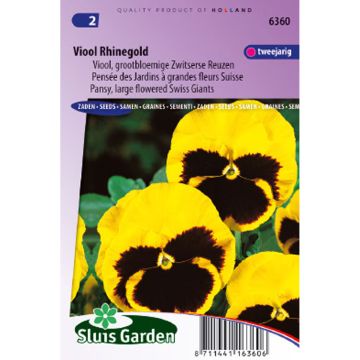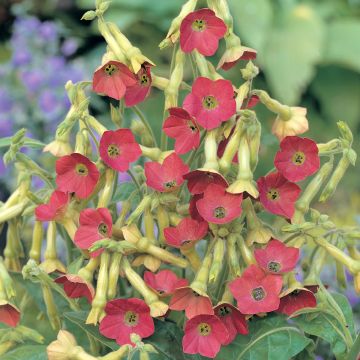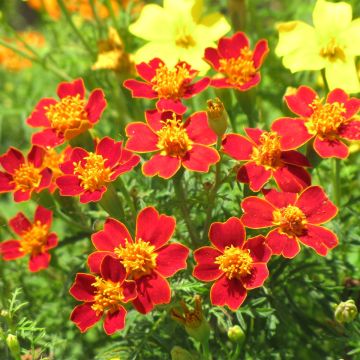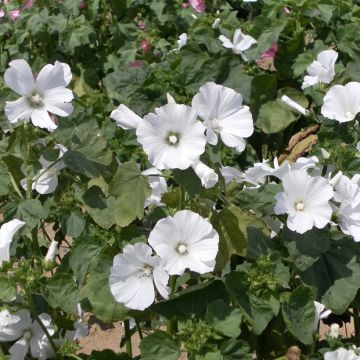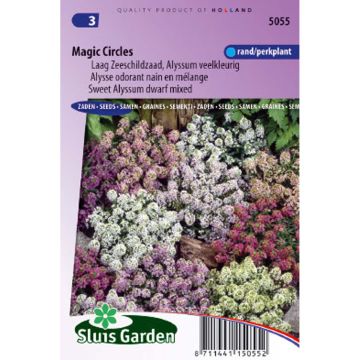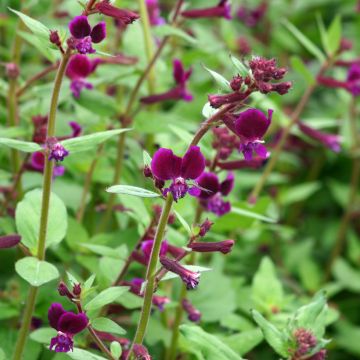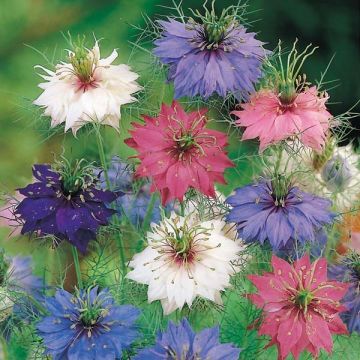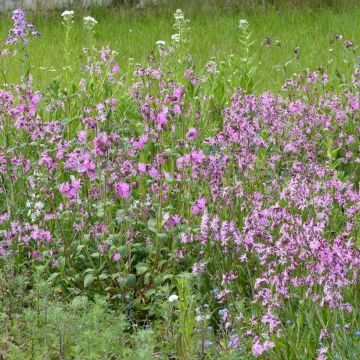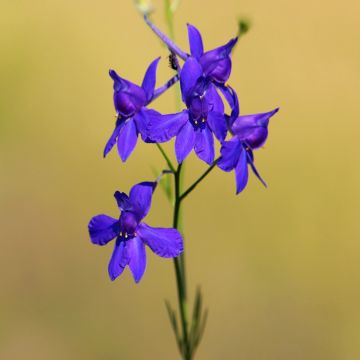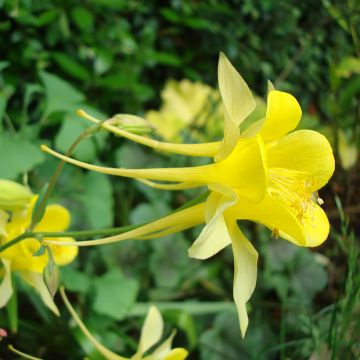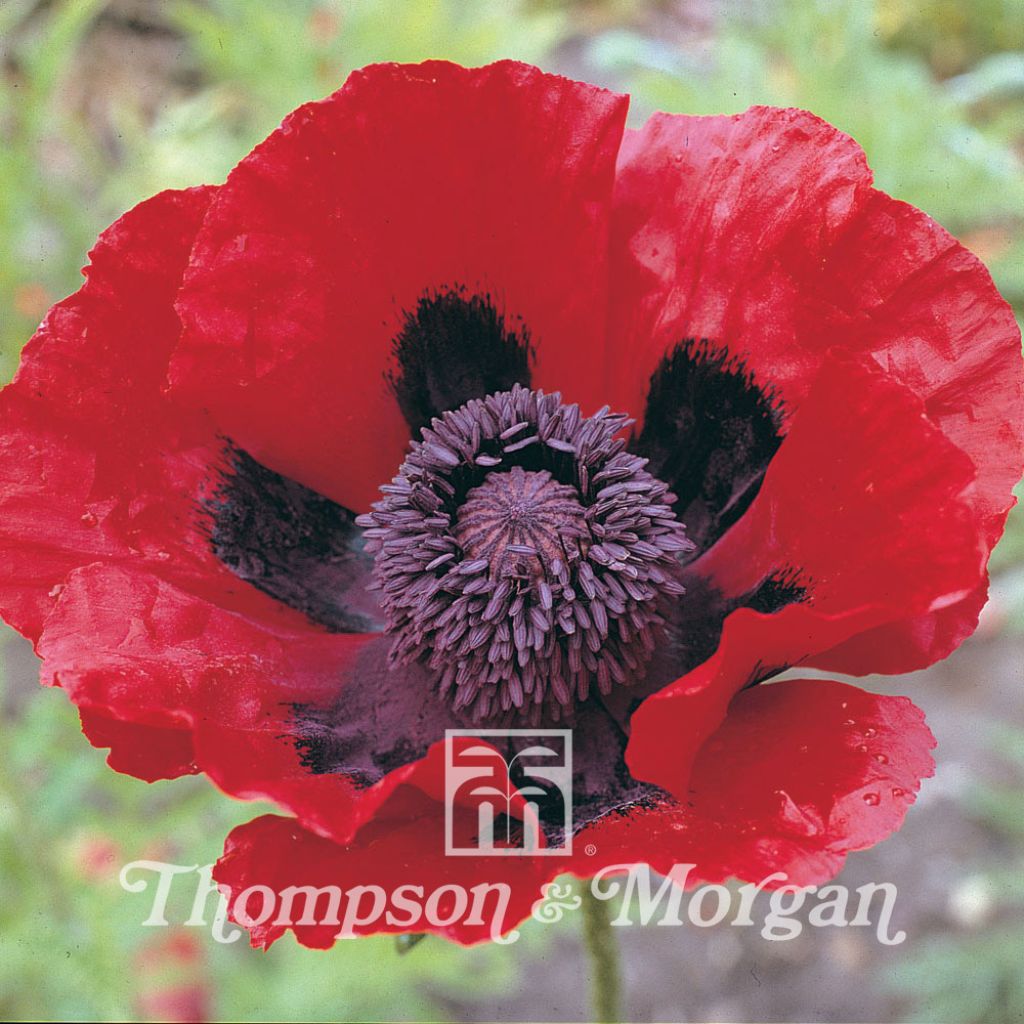

Papaver bracteatum Seeds - Iranian Poppy
Papaver bracteatum Seeds - Iranian Poppy
Papaver bracteatum Great Scarlet
Iranian Poppy, Persian Poppy
Just been sown...
Godefroy D., 09/03/2021
This plant carries a 6 months recovery warranty
More information
We guarantee the quality of our plants for a full growing cycle, and will replace at our expense any plant that fails to recover under normal climatic and planting conditions.
Seed-only orders are dispatched by sealed envelope. The delivery charge for seed-only orders is €3.90.
Does this plant fit my garden?
Set up your Plantfit profile →
Description
Even more impressive than the Oriental Poppy, this Iranian or Persian Poppy, also called Papaver bracteatum or Great Scarlet Poppy, looks like a giant common poppy. In spring, its tall stems emerge from vigorous vegetation bearing large buds which bloom into scarlet, black spotted corollas, measuring up to 20 cm in diameter; all without bending or breaking. This very hardy perennial is ideal for wilder areas of the garden and the back of beds. It does not require staking or any maintenance and can satisfy itself with deep, even mediocre soil that is dry in the summer.
Native to temperate Asia (from the Caucasus to the Himalayas), this perennial which is closely related to Papaver orientale, is naturalized throughout temperate Europe. Papaver bracteatum or Great Scarlet Poppy looks very much like it, but it often grows to over 1.30 m in height and lives even longer. Its flower buds are erect, underlain by 3 to 5 sepaloid bracts and 2 foliaceous bracts. Its flowers appear earlier, in May - June, and are larger, easily reaching 20 cm in diameter. Their petals are deep red with a black basal spot and surround a large centre packed full of black stamens. The fruits are capsules that are also longer than those of its cousin, measuring about 4 cm in length. They are very ornamental. After the flowering period, the foliage tends to disappear, giving way in autumn to a small basal rosette, which is a typical adaptation to high temperatures and summer drought. This plant has large, rough, cut leaves covered with hairs which give them a very decorative grey-blue sheen. The deep, fleshy roots of this poppy do not tolerate transplanting, especially on adult plants. Sowing directly gives good results.
The Great Scarlet Poppy is an excellent plant for the back of the dry beds that flowers at the same time as most spring flowering species. It goes very well with the anise green colours of Euphorbia cyparissias or Alchemilla mollis. Oriental poppies are just as at home in sophisticated flower beds as they are in monastic gardens or more rural schemes. Combine them with the airy blooms of sagebrush, lavender, asters and catnips. They also go beautifully with Ceratostigma plumbaginoides or Blue deadwood whose blooms will take over later in the year, love-in-a-mist, coneflowers and mulleins, creating a soft-coloured, summery atmosphere. In any case, combine them with perennials since they will fill the space left empty after their last blooms. They are also tough and undemanding plants, capable of living in poor, stony soils that dry out in the summer.
Report an error about the product description
Flowering
Foliage
Plant habit
Botanical data
Papaver
bracteatum
Great Scarlet
Papaveraceae
Iranian Poppy, Persian Poppy
Central Europe
Other Thompson and Morgan seeds
Planting and care
Sow the poppy seeds preferably outdoors, directly in their final locations, from March to May. Rake the soil carefully and sow the fine seeds just below the soil's surface. Water regularly, especially during dry periods. When the young poppy seedlings are sufficiently large enough to be handled, thin out to 30 cm apart.
You can also sow this poppy from February to May at the surface of light, moist soil at a temperature of about 15° C. Do not cover the seeds. Place in a mini-greenhouse or plastic bag until germination, which usually takes 10 to 21 days. Keep in a well-lit location as this facilitates germination.
Transplant the young poppies when they are large enough to be handled, in 8 cm pots or trays that are deep enough. The pots and trays should be kept in a cool location. When the plants are well-developed, gradually acclimatize them to the outdoors for 7 to 10 days before planting them out in the garden. Plant the poppies 30 cm apart from each other, in a sunny position, in fertile and well-drained soil. Late sowings can overwinter in a cold frame and will wait the following spring to be planted out in the garden.
Persian poppy is a very hardy plant that can withstand temperatures as low as -20 °C. Like most poppies, it is easy to grow. Any soil is suitable, even limestone, as long as it is drained. This plant abhors heavy, waterlogged soil in winter. The soil must also be deep so that its long, fleshy taproot can develop properly. It is essential that the plant is planted in full sunlight.
Sowing period
Intended location
-
, onOrder confirmed
Reply from on Promesse de fleurs
Flower seeds
Haven't found what you were looking for?
Hardiness is the lowest winter temperature a plant can endure without suffering serious damage or even dying. However, hardiness is affected by location (a sheltered area, such as a patio), protection (winter cover) and soil type (hardiness is improved by well-drained soil).

Photo Sharing Terms & Conditions
In order to encourage gardeners to interact and share their experiences, Promesse de fleurs offers various media enabling content to be uploaded onto its Site - in particular via the ‘Photo sharing’ module.
The User agrees to refrain from:
- Posting any content that is illegal, prejudicial, insulting, racist, inciteful to hatred, revisionist, contrary to public decency, that infringes on privacy or on the privacy rights of third parties, in particular the publicity rights of persons and goods, intellectual property rights, or the right to privacy.
- Submitting content on behalf of a third party;
- Impersonate the identity of a third party and/or publish any personal information about a third party;
In general, the User undertakes to refrain from any unethical behaviour.
All Content (in particular text, comments, files, images, photos, videos, creative works, etc.), which may be subject to property or intellectual property rights, image or other private rights, shall remain the property of the User, subject to the limited rights granted by the terms of the licence granted by Promesse de fleurs as stated below. Users are at liberty to publish or not to publish such Content on the Site, notably via the ‘Photo Sharing’ facility, and accept that this Content shall be made public and freely accessible, notably on the Internet.
Users further acknowledge, undertake to have ,and guarantee that they hold all necessary rights and permissions to publish such material on the Site, in particular with regard to the legislation in force pertaining to any privacy, property, intellectual property, image, or contractual rights, or rights of any other nature. By publishing such Content on the Site, Users acknowledge accepting full liability as publishers of the Content within the meaning of the law, and grant Promesse de fleurs, free of charge, an inclusive, worldwide licence for the said Content for the entire duration of its publication, including all reproduction, representation, up/downloading, displaying, performing, transmission, and storage rights.
Users also grant permission for their name to be linked to the Content and accept that this link may not always be made available.
By engaging in posting material, Users consent to their Content becoming automatically accessible on the Internet, in particular on other sites and/or blogs and/or web pages of the Promesse de fleurs site, including in particular social pages and the Promesse de fleurs catalogue.
Users may secure the removal of entrusted content free of charge by issuing a simple request via our contact form.
The flowering period indicated on our website applies to countries and regions located in USDA zone 8 (France, the United Kingdom, Ireland, the Netherlands, etc.)
It will vary according to where you live:
- In zones 9 to 10 (Italy, Spain, Greece, etc.), flowering will occur about 2 to 4 weeks earlier.
- In zones 6 to 7 (Germany, Poland, Slovenia, and lower mountainous regions), flowering will be delayed by 2 to 3 weeks.
- In zone 5 (Central Europe, Scandinavia), blooming will be delayed by 3 to 5 weeks.
In temperate climates, pruning of spring-flowering shrubs (forsythia, spireas, etc.) should be done just after flowering.
Pruning of summer-flowering shrubs (Indian Lilac, Perovskia, etc.) can be done in winter or spring.
In cold regions as well as with frost-sensitive plants, avoid pruning too early when severe frosts may still occur.
The planting period indicated on our website applies to countries and regions located in USDA zone 8 (France, United Kingdom, Ireland, Netherlands).
It will vary according to where you live:
- In Mediterranean zones (Marseille, Madrid, Milan, etc.), autumn and winter are the best planting periods.
- In continental zones (Strasbourg, Munich, Vienna, etc.), delay planting by 2 to 3 weeks in spring and bring it forward by 2 to 4 weeks in autumn.
- In mountainous regions (the Alps, Pyrenees, Carpathians, etc.), it is best to plant in late spring (May-June) or late summer (August-September).
The harvesting period indicated on our website applies to countries and regions in USDA zone 8 (France, England, Ireland, the Netherlands).
In colder areas (Scandinavia, Poland, Austria...) fruit and vegetable harvests are likely to be delayed by 3-4 weeks.
In warmer areas (Italy, Spain, Greece, etc.), harvesting will probably take place earlier, depending on weather conditions.
The sowing periods indicated on our website apply to countries and regions within USDA Zone 8 (France, UK, Ireland, Netherlands).
In colder areas (Scandinavia, Poland, Austria...), delay any outdoor sowing by 3-4 weeks, or sow under glass.
In warmer climes (Italy, Spain, Greece, etc.), bring outdoor sowing forward by a few weeks.

































